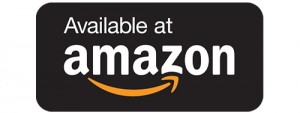Buddhism has attracted a large following from all walks of people because of its basic tenet: Dharma stands for the greatest good of the greatest number of people. This simple philosophy appeals to many people, regardless of the faith they may be following.
Swami Vivekananda said, “Buddha, the great one… never thought of a thought and never performed a deed, except for the good of others.”
The ancient method of meditation and change of the inner heart, or antah-karan, became more strongly pronounced in Buddha’s doctrine. At the same time, he also stressed right association (satsanga) as the preliminary step. Both Jainism and Buddhism discarded the classical language of Sanskrit in favor of the local common languages of the masses. The language used in the ancient Buddhist scriptures is Pali, which is a modified form of Prakrit.
Buddha taught four Noble Truths:
- The Existence of Sorrow. Sorrow is part of life. We cannot totally avoid it. We must learn to accept it.
- The Cause of Sorrow. Whatever happens has a cause. The cause may be in the immediate past, or it may be the result of earlier births.
- The Cessation of Sorrow. Not all but most sorrow can be overcome.
- There is a way, which leads to the cessation of sorrow.
Buddha also taught the Eightfold Path:
- Right Understanding (Free from superstition and delusion)
- Right Thought (Worthy and intelligent thoughts determine our acts.)
- Right Speech (Be kind and truthful. Avoid idle talk.)
- Right Actions (Be peaceful and pure.)
- Right Livelihood (Do not hurt any living beings. Avoid hunting, selling of weapons, liquor, and livestock for slaughtering.)
- Right Effort (Practice self-training and self-control.)
- Right Mindfulness (Develop an active, watchful mind)
- Right Concentration (Practice deep meditation—dhyana.)
In the Buddhist scripture, the Bhante Henepola Gunaratana, there is special instruction regarding speech:
Skillful speech not only means that we pay attention to the words we speak and to their tone but also requires that our words reflect compassion and concern for others.
Even as Buddhism spread in many countries, its influence in India, on the other hand, lessened over centuries. This is partly attributed to the renaissance efforts of Hinduism by a series of highly spiritual seers, such as Sri Sankara. But it is also believed that there was a genuine accommodation, by both the Hindus and the Buddhists, to live in harmony and accept the viewpoints of one another. Indeed, the relationship of Hinduism to other faiths and sects, which sprang as its offshoots, has always remained conciliatory to a very large extent.
Buddhist teachings are not in variance with the Vedic teachings, but are modified. In this religion, the practice of meditation (already mentioned in ancient Hindu scriptures) has been given the highest importance. Budhha also taught: Sorrow is part of life. We cannot totally avoid it. We must learn to accept it. There is a way, which leads to the cessation of sorrow. (Meditation)
The congregation of spiritual worshippers together-“satsang”-too, became an essential tool in spreading the spiritual teachings, thereby replacing the mystical high power of the priest. Even the language used was changed from classical Sanskrit, which had become nearly a monopoly of the Brahminic class, to the common, mass-spoken language, Pali. In Hindu rituals and religious ceremonies, on the other hand, Sanskrit has continued to remain the apex language. These rites and religious formalities are yet performed by hereditary Brahmins to a very large extent, even in foreign countries, where many Hindus are now settling. Some changes have undoubtedly taken place in recent times; appointing a priest is no longer strictly based on the hereditary caste system. In some Hindu temples of USA, one may see a Caucasian priest, chanting the Sanskrit slokas in brief, and later explaining the meaning elaborately in English! Similar changes are taking place all over, including in India.
NOTE: All quotes are adapted from “Thus Spake Lord Buddha,”
Sri Ramakrishna Math, Mylapore, Chennai India, 1998.




